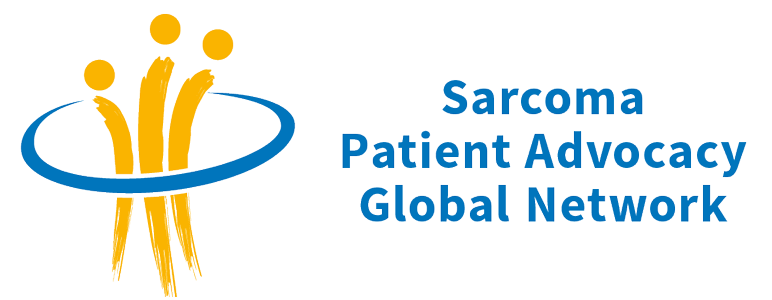The Value of Patient Involvement in Research


We hear a lot about patient involvement in research these days. It’s a hot topic. But what does it actually mean? And more importantly, what benefits does it bring?
I have been working as an involved patient in cancer research since 2002. I have contributed to the development of clinical studies, assessed projects for funding, and reviewed the scientific performance of research units. I have also worked strategically helping define programmes of research at a national level.
Whenever I work with a research group and advocate for patient involvement, the first question I am always asked is: What is the value of patient involvement?
Here are some answers to this question based on experience.
An Evolving Relationship: Value Emerges Over Time
First of all, being an involved patient is a long-term commitment, both on the part of the research team and the involved patient. The real value emerges most clearly over time.
In the early weeks of involvement, the patient will be contributing their perspectives based on their own experience. During this time, the involved patient will also gradually build an understanding of the science relevant to the area of research. They will then learn to project that scientific understanding onto clinical issues. This is a crucial step, one that comes from learning about the science from their co-researchers. There should be a conscious recognition on all sides that such learning is important and should be encouraged. It is the basis on which value builds.
As their involvement develops, involved patients will also begin to share ideas of their own. Experience shows that they will start exploring these ideas informally, over coffee or during a lunch break. Individual researchers should work with the patient and be ready to develop a good idea the patient has identified and take it forward for discussion more widely. The patient’s role in initiating the idea must always be acknowledged. However, it must not be expected or relied upon; it is a bonus if it happens and can have unexpected results.
The key to a good relationship between the involved patient and the researchers is transparency and honesty. Trust builds up, a relationship develops, the patient becomes more relaxed and more knowledgeable, the researchers respect the involved patient as a member of their team, more ideas get tested informally earlier in the development process, the contribution grows and there is a mutual recognition of value from the relationship.

Real Benefits of Patient Involvement
This relationship can lead to real benefits, especially when involved patients open researchers’ eyes to the realities of the patient experience. (Checklists such as this one and this one can aid the process.)
For example, the involved patient can tell researchers what patients really hope to get from a trial. Patients can make clear which trial outcomes would matter most to them and ask to have these reflected in the trial endpoints. They can say whether potential side effects of an intervention would be acceptable to them, and whether they would accept a poor quality of life if it meant prolonging their life.
The involved patient can also tell researchers about the challenges trial participation brings. Maybe frequent hospital visits would pose a heavy burden -- financially, logistically, or emotionally. Perhaps the trial site is very far from home; older patients who no longer drive or patients with young children might find it difficult to participate for this reason. Something seemingly minor, like the cost of parking at the hospital, could also add up and pose a burden. It might also be that some of the physical requirements of the trial are too difficult for patients to adhere to – e.g., fasting for many hours, eating fat-free food before ingesting medication, or dispensing pills when dexterity is impaired due to illness. Researchers should know about these things.
The involved patient can also help researchers find ways to ease these burdens. Perhaps clinic visits could be reduced by the use of technology. Maybe some trial-related testing could be completed locally. Video tutorials could be made to help the patient understand complex processes. The involved patient can also let researchers know whether the documents used by patients in the course of a trial, such as informed consent forms or information brochures, are layperson-friendly, clear, and understandable.
Once a trial is underway, an involved patient will share their views about treatment side effects and likely also advocate for the effective use of patient reported outcomes (PROs). Patient-reported outcomes (PROs) are used in clinical trials to provide evidence of the benefits and risks of interventions from a patient perspective and to inform regulatory decisions and health policy. While the issue of the respondent burden is an important one and needs to be addressed (it will be covered in a future blog post), PRO’s play an essential role in value-based healthcare initiatives.
Understanding the patient perspective can bring about meaningful improvements in the patient experience of a trial. Ultimately, patient involvement changes the way trials are conducted. This can also have real benefits, among them improved patient recruitment, better patient adherence, and more robust data, which remain some of the main obstacles to the successful completion of clinical trials.
Can We Quantify the Value of Patient Involvement?
Both the culture and the practice of research evolve beneficially through patient involvement.
But you can see immediately that the value of this kind of involvement is difficult to quantify. If you were to try and measure it, what would you compare your results with? Trying to establish the “value” of involvement in numerical terms is impossible.
However, the benefit of patient involvement can be assessed qualitatively by asking patients and researchers about their experience, either through a structured questionnaire or by gathering anecdotal comments. Getting feedback from both patients and researchers, asking individuals to consider what has changed through patient involvement, is probably the best way of assessing its impact.
Accepting the Challenges that Change Brings
Patient involvement means change. As we strive for change, we don't always acknowledge and accept the challenges that it can bring with it.
For example, patient involvement may mean that a study takes longer at the start during the development process, but it may get its ethical approvals more quickly as a result. There are two different impacts on the research team in this example – slower early development versus faster ethical approval. However, the end result may be a quicker development overall, which is not obvious at the outset.
Involvement may introduce more changes and iterations to the study up front, but it may make it more meaningful as a result, more impactful throughout its life, and may lead to a more robust final output as a result of the additional considerations the involved patient brings.
“How do we do it and make it work?”
There may be costs to building good public involvement but doing higher quality research and doing it better can be cheaper than the alternative.
Questions about the value of patient involvement in research should not ask “How much does it cost?”. Rather, the questions which really matter are “Why are we doing it?” and “How do we do it and make it work?”.
While there may not be a basis for quantifying the impact of this development, involving patients is about creating collaborative research, conducting better studies, and delivering stronger results.
It is about developing a research culture which is truly multi-disciplinary and focussed on delivering benefit to patients.
Roger Wilson, CBE HonMD HonLLD
Honorary President of SPAGN
Roger is currently working as a patient on two sarcoma clinical studies, on the steering group of two scientific developments and supporting two PhD research students.
Photo credits: Anthony Metcalfe, Ruben Ramirez on Unsplash

So much learning and insight.I hope the researchers look into it with the new insights.
Great article, Roger! As usual, you have perfectly covered all the essential aspects of patient involvement! Thank you!!!